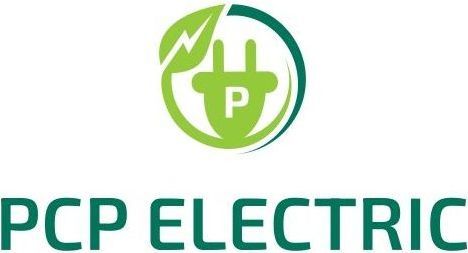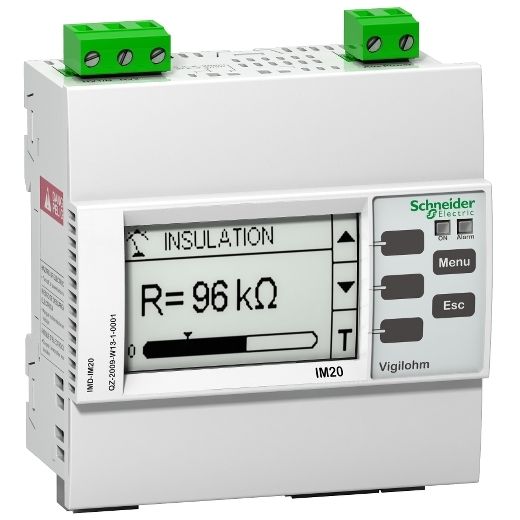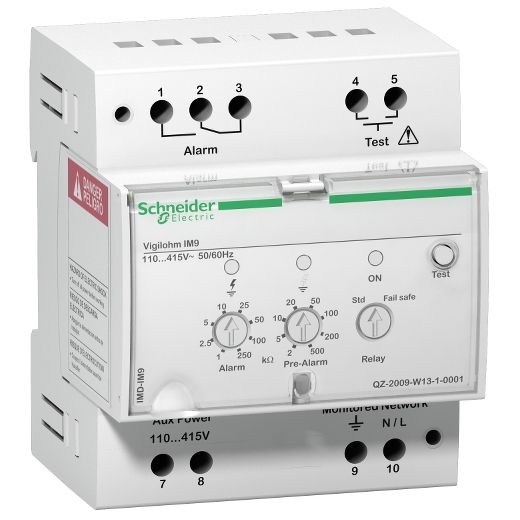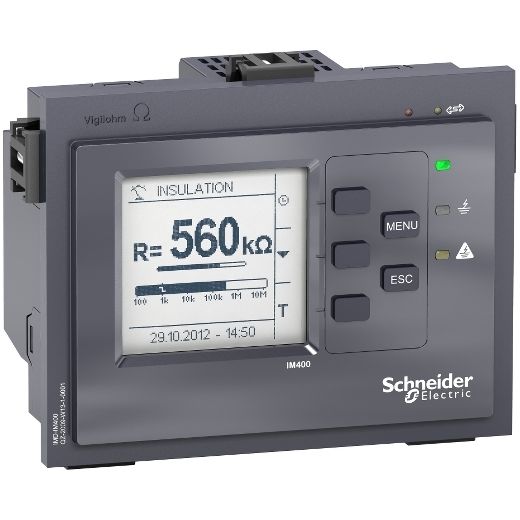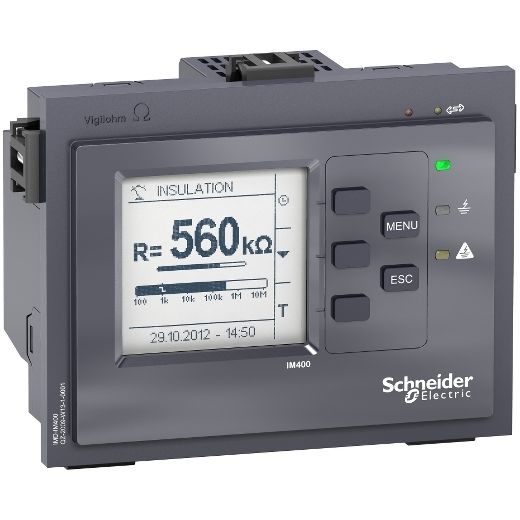Vigilohm Insulation Monitoring
Insulation monitoring devices are essential components of electrical systems, particularly in critical applications such as power distribution, industrial processes, and healthcare facilities. These devices play a crucial role in detecting insulation faults in electrical circuits and equipment, helping to prevent electrical accidents, equipment damage, and downtime. Here's how insulation monitoring devices work for fault detection and location:
Fault Detection:
Insulation monitoring devices continuously monitor the insulation resistance of electrical circuits and equipment. They measure the leakage current flowing through the insulation to detect any abnormalities or deviations from normal operating conditions. If the insulation resistance falls below a preset threshold or if there is a significant increase in leakage current, the insulation monitoring device triggers an alarm or initiates a protective action to alert operators of a potential fault.
Location Identification:
Insulation monitoring devices help to pinpoint the location of insulation faults within electrical systems. By analyzing the characteristics of the insulation fault, such as the magnitude and direction of leakage currents, these devices can determine the precise location of the fault along the electrical circuit. This information is valuable for troubleshooting and maintenance purposes, allowing operators to quickly identify and isolate the faulty equipment or section of the electrical system.
Types of Insulation Faults:
Insulation monitoring devices can detect various types of insulation faults, including:
- Phase-to-Ground Faults: These faults occur when one or more phases come into contact with ground or other conductive surfaces, resulting in leakage currents flowing through the insulation to ground.
- Phase-to-Phase Faults: These faults involve a direct short circuit between two or more phases, bypassing the insulation and creating a path for leakage currents between phases.
- Phase-to-Neutral Faults: These faults occur when a phase conductor comes into contact with the neutral conductor, causing leakage currents to flow through the insulation between phase and neutral.
- Inter-winding Faults: In transformers and rotating machines, insulation faults can occur between the windings or coils, leading to leakage currents between different winding layers or phases.
Alarm and Protective Actions:
When an insulation fault is detected, insulation monitoring devices can initiate various alarm and protective actions to mitigate the risk of electrical hazards and equipment damage. These actions may include:
- Audible and visual alarms to alert operators of the fault condition.
- Automatic disconnection of the affected circuit or equipment to isolate the fault and prevent further damage.
- Trip signals to upstream protective devices, such as circuit breakers or relays, to initiate protective actions and de-energize the faulty circuit.
- Remote notification and communication capabilities to inform maintenance personnel or control systems of the fault condition for timely response and resolution.
Benefits of Insulation Monitoring:
Insulation monitoring devices offer several benefits for electrical systems, including:
- Early detection of insulation faults to prevent electrical accidents and equipment damage.
- Improved system reliability and uptime by identifying and addressing potential issues before they escalate.
- Compliance with safety standards and regulations for electrical installations, particularly in critical environments such as healthcare facilities, data centers, and industrial plants.
- Reduced maintenance costs and downtime associated with unplanned repairs and equipment failures.
- Enhanced operational safety and personnel protection by minimizing the risk of electric shock, fire, and other hazards associated with insulation faults.
Conclusion:
Insulation monitoring devices are essential components of modern electrical systems, providing reliable fault detection and location capabilities to ensure the safety, reliability, and performance of critical infrastructure. By continuously monitoring insulation resistance and leakage currents, these devices help to identify and mitigate insulation faults, protecting equipment, personnel, and facilities from the risks of electrical hazards and d owntime.

